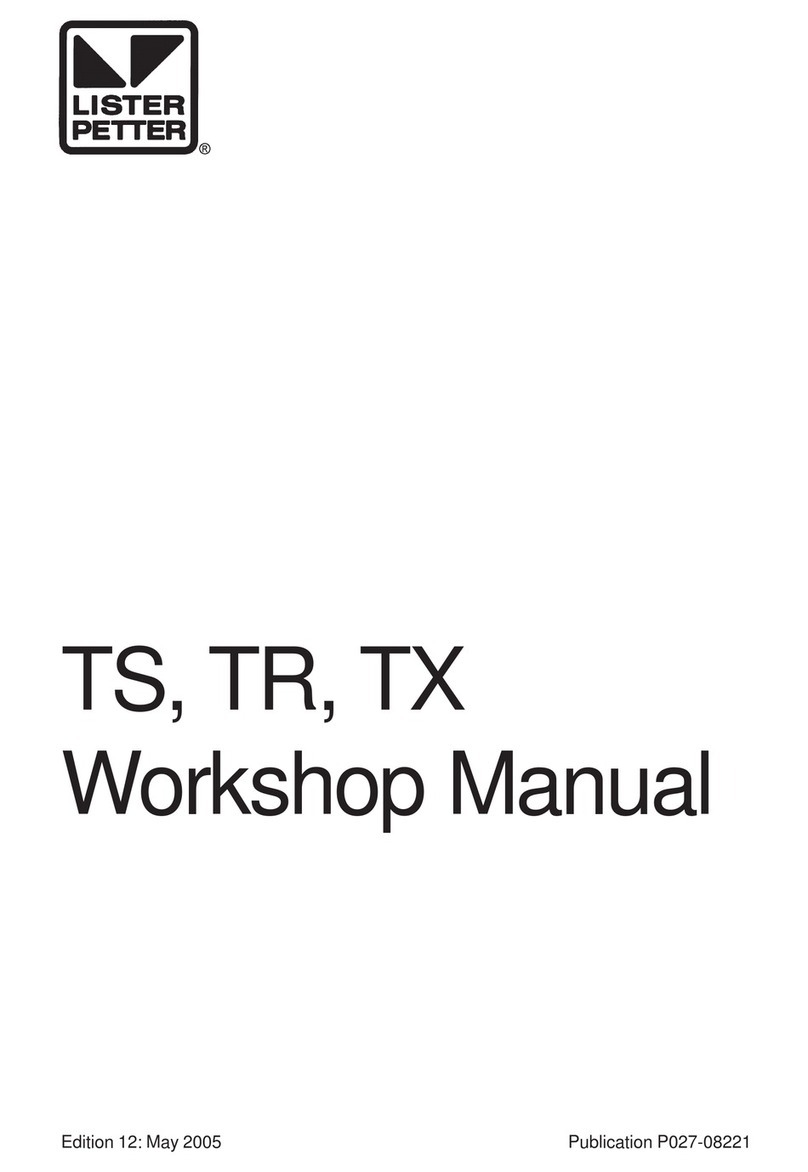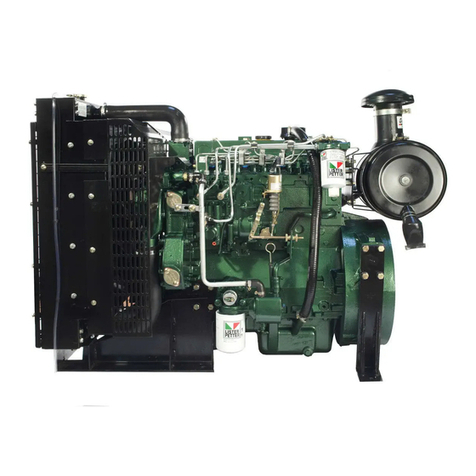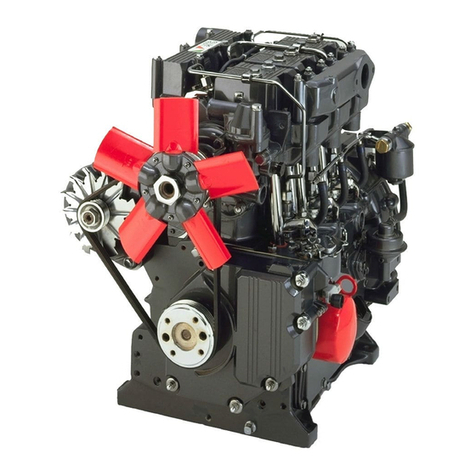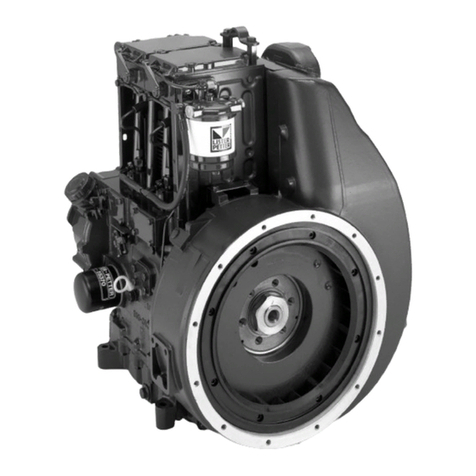
Lister Petter LT and LV Operators Handbookpage 2
Introduction
The purpose of this handbook is to lay
downoperatingguidelines forthe LT1 and
LV1 engine ranges.
The specification details given apply
to a range of engines and not to any one
particular engine, in cases of difficulty the
user should consult the local Lister Petter
DistributororDealer forfurtheradvice and
technical assistance.
The information, specifications,
illustrations, instructions and statements
contained within this publication are given
with our best intentions and are believed
to be correct at the time of going to press.
Our policy is one of continued
development and we reserve the right to
amend any technical information with or
without prior notice.
Whilst every effort is made to ensure
the accuracy of the particulars contained
within this publication neither the
Manufacturer, Distributor or Dealer shall
inanycircumstances beheld liableforany
inaccuracy or the consequences thereof.
The information given is subject to the
Company’s current Conditions of Tender
and Sale, and is for the assistance of
users and is based upon results obtained
from tests carried out at the place of
manufacture. This Company does not
guarantee that the same results will be
obtained elsewhere under different
conditions.
Using this Operators Handbook
It is recommended the individual
steps contained in the various
maintenance or repair operations are
followed in the sequence in which they
appear.
When a diesel engine is operating or
being overhauled there are a number of
associated practices which may lead to
personal injury or product damage.
Your attention is drawn to the symbols
shown and described below which are
applied throughout this publication.
CAUTION
This caution symbol draws attention to
special instructions or procedures which,
if not correctly followed, may result in
damage to or destruction of equipment.
WARNING
This warning symbol draws attention to
special instructions or procedures which,
if not strictly observed, may result in
personal injury.
WARNING
A WARNING SYMBOL WITH THIS
TYPE OF TEXT DRAWS ATTENTION
TO SPECIAL INSTRUCTIONS OR
PROCEDURES WHICH, IF NOT
STRICTLY OBSERVED, MAY RESULT
IN SEVERE PERSONAL INJURY, OR
LOSS OF LIFE.
Running-in
A gradual running-in of a new engine
is not necessary. Extended light load
running early in the life of the engine may
cause detrimental damage to the cylinder
bore allowing lubricating oil to enter the
exhaust system.
To help assist engine running-in, all
engines are despatched with an initial fill
lubricating oil which must be changed
after 100 hours.
Associated Publications
Workshop Manual ............... P027-09207
Master Parts Manual ........... P027-08043
Technical Handbook ........... P027-09212
Introduction
Introduction







































